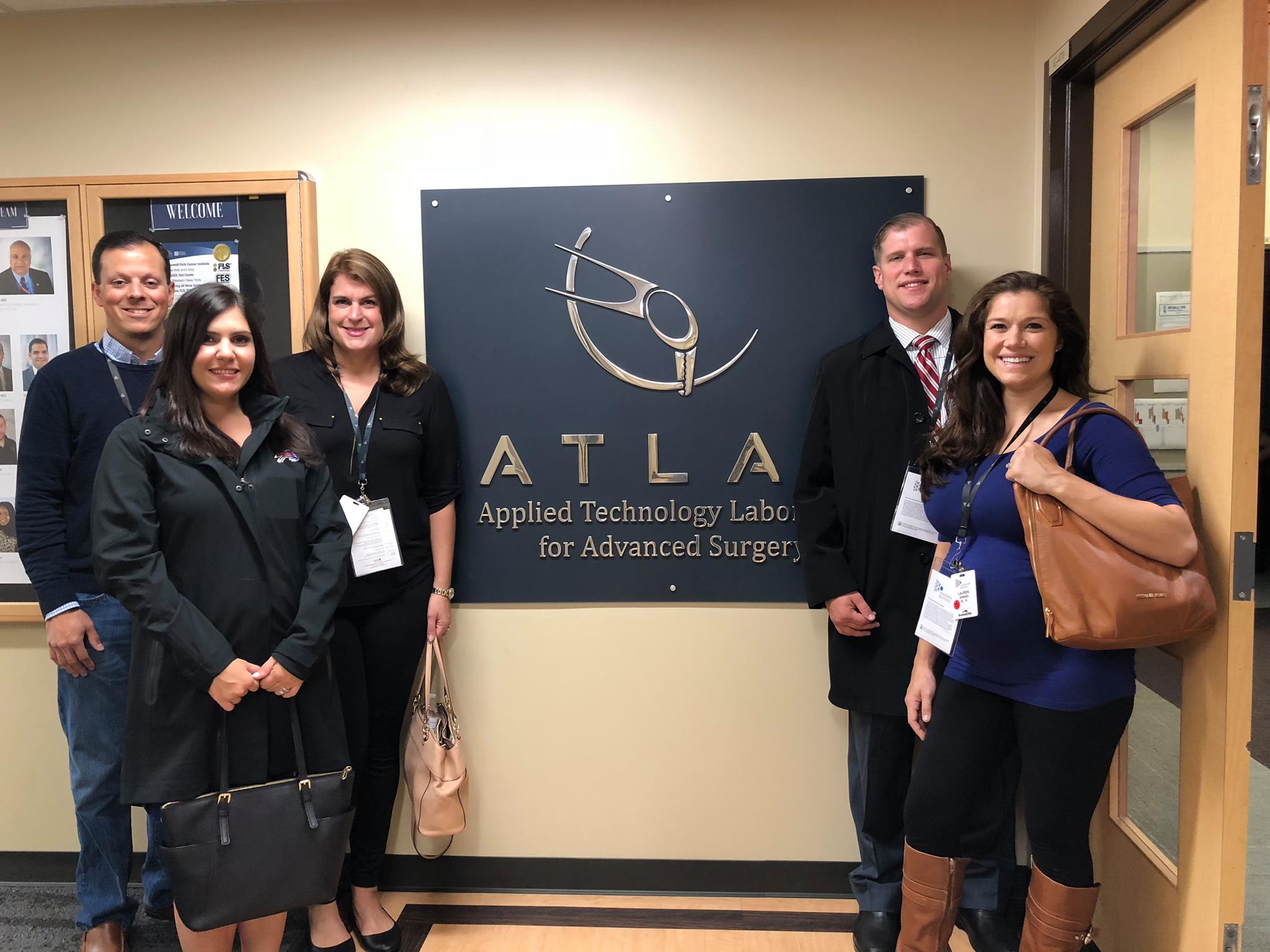Day Session Blogger: Mary Kate Metzger, Buffalo State College
Explain how mental health relates to physical health:
Understanding the links between mental health and physical health is the first step in developing strategies and coping mechanisms that reduce the incidence of conditions and support those living with these conditions. Mental health is an invisible, overwhelming set of thoughts that are debilitating and interfere with daily functioning. It is a risk factor for chronic physical conditions and affects one's ability to practice healthy behaviors. The two are fundamentally linked and significantly impact one's quality of life, demands on health care, and generates other consequences to society. Overall, there is no health without mental health!
Talk about the link between mental health and addiction:
There is a definite shared connection between mental health and addiction, however, one doesn't directly cause the other. Both mental health and substance abuse have their own unique symptoms and challenges. Mental health disorders are the result of many complex genetic and environmental factors and substance abuse commonly aggravates those symptoms. The complexities of mental illness are often compounded by addiction, making it a challenge to get the right diagnoses and treatment. Substances do little to address the underlying mental health symptoms and create a whole new batch of problems while also increasing the severity of the original mental health symptom or symptoms. The two often co-occur, but they are distinct disorders that must be addressed as such in order to get a positive outcome. With the right support, self-help, and treatment plan, one can overcome a co-occurring disorder, reclaim their sense of self, and get better.
What are the future plans of the Buffalo Niagara Medical Campus and how the BNMC has and will continue to make Buffalo better?
The concept and design of the Buffalo Niagara Medical Campus was modeled after the Texas Medical Center, a large and innovative medical complex that is considered to be a leader in collaborative research and medicine. Buffalo leaders in economic development and medicine, competitors in one way and collaborators in another, were faced with the question of how we bring all of the medical and research institutions together to benefit the entire community. There was also a desire for an infrastructure spine for current companies to grow further while also remaining local. With that came the inception of the BNMC, which is home to 16,000 current employees and continues to grow.
Panelists, including Kari Bonaro (BNMC), Sean Brodfuehrer (UB Campus Planning and Jacobs School of Medicine), Mike Hughes (Kaleida Health) and Cynthia Schwartz (Roswell Park Comprehensive Cancer Center), spoke about the medical campus and its position locally and globally. Throughout their discussion, they echoed similar sentiments pertaining to the shared partnership and growth opportunities in this venture. A pivotal moment was the move of what is now known as Oishei Children's Hospital, which was a conversation fifteen years in the making and has more than doubled its space and number of employees in the last decade. Additionally, transitioning the Jacobs School of Medicine from UB's south campus has also contributed greatly to the success of the BNMC. Operating a medical school in a centralized location with access to plentiful resources has resulted in increased student and faculty size. Life science and biotechnology companies make up a majority of the BNMC, but newer international companies focused on other methods of technology are also helping to diversify the campus further.
The BNMC provides unique and beneficial incentives for its employees. To combat a three-year waiting list for a covered parking ramp spot on its campus, the BNMC has seen an increase in the use of the nearby Metro light rail system with over fifty percent of employees using this method of transportation. A corporate pass program has made this more affordable and desirable as well. In addition, ReddyBike memberships, a GoBNMC! program offering a free Lyft ride twice a month, Zipcar access, and electric scooters have encouraged employees to transition from using single occupant vehicles to more environmentally-friendly options. In addition to transportation, the BNMC has become more aware and proactive in identifying and combating gentrification concerns. The panelists agreed that leaders on the campus want to ensure that individuals living here have access to work on the BNMC. A recent study showed that 40% of new hires at Roswell Cancer Center lived in the city of Buffalo and 33% were living in the surrounding neighborhoods. There are ongoing discussions regarding the creation of housing developments for employees in the neighboring areas, specifically paraprofessional and other support staff.
The panelists concluded the discussion by providing some updates on what is next for the BNMC. The University of Rochester recently provided 19 million dollars in funding for a national study on the impact of tobacco. Additionally, the medical campus will play a vital role in vaccine trials and plan to collaborate with an immunotherapy center in Cuba. As expected, the BNMC will continue to focus its efforts on building up and not out which may include updating current facilities as needed or phasing out for more development.
What did you learn about the current opioid addiction crisis in Erie County and the nation? What solutions and strategies are there to combat this crisis?
We are not unique in Erie County. The misuse of and addiction to opioids (e.g. Heroin, prescription pain relievers, and Fentanyl) is a serious national crisis that affects public health as well as social and economic welfare. It is a chronic disease and does not discriminate. Opioids are highly addictive, especially to the 10-15% of the population who are genetically predisposed to disease. In many cases, illegal use begins innocently enough with the abuse of legally prescribed pain relievers. 90% of prescriptions are written in the United States. Nationally, there were 72,000 opioid-related deaths in 2017. It is also not a problem contained to urban settings only. Related deaths are highest among Caucasian men in their thirties, but it is still affecting everyone. Locally in 2017, fatal overdoses in Erie County accounted for 10% of deaths in rural areas, 43% in the city of Buffalo, and 43% in suburban communities. We have literally prescribed ourselves into a disaster.
In Erie County, officials have created the Opiate Epidemic Task Force which is comprised of seven committees. These committees include Rapid Evaluation and Appropriate Placement (REAP), Family and Consumer Support Advocacy Section, Heroin Opiate Prevention Engagement Project (HOPE), Provider Education and Policy Reform, Hospitals and Emergency Departments, Naloxone Access, and Treatment Providers. The mission of the Task Force is to “provide a framework for organizations and individuals from across the opiate overdose continuum to collaborate, develop, and share best practices through timely sharing of information to assist individuals and their loved ones fighting the disease of addiction and to undertake prevention efforts that educate the community on the dangers of addiction.” Our speaker, Cheryll Moore (Erie County Department of Health) oversees the Naloxone Access committee. In addition to training our class on how to administer Narcan nasally or through injection, she spoke about how we should do our due diligence in identifying overdose and seek medical treatment if we are faced with an individual in distress. Lastly, she described other response efforts from local and national officials, including improving access to treatment and recovery services, promoting the training and use overdose-reversing drugs such as Narcan, strengthening the public's understanding of the epidemic, providing support for advanced research on pain and addiction, and identifying better practices for pain management.
What are the different types of insurance and how do people access health care in Buffalo?
Every resident in Erie County is eligible for some type of health insurance plan. The types of insurance plans include individual, sole proprietor, employer-sponsored, and government sponsored and employer plans. For those without health insurance, obtaining coverage can be done through the Marketplace or Exchange. This is typically through direct purchase and is based on one's income. Their options include Medicaid, CHP, Essential, Metal Tiers, and Catastrophic plans. Employer sponsored health insurance allows individuals to enroll through their employer annually or upon hire. The employer contribution must meet the regulatory threshold. Medicare, for those who are disabled or of age, is usually obtained through direct purchase or through employer sponsorship as part of their retirement package. 54% of Western New York's population qualifies for a health insurance coverage subsidy based on their income and 39% qualify for Medicaid.
What are this day impacted you the most?
I was impacted the most by the individual visits I participated in during the day session. My group visited the Hauptmann Woodward Research Institute (HWRI) and Evergreen Health, two organizations I had minimal knowledge of prior to my visit. Hauptmann Woodward is a non-profit independent research institute aimed at understanding disease, learning how they originate, and finding new cures or ways to alleviate symptoms. Upon entry into their building, you are presented with beautiful paintings which we came to learn are of protein structures that were discovered by HWRI's research staff. It was founded sixty years ago and produced Buffalo's only Nobel Laureate recipient. Researchers at HWRI use structural biology as their methodology to describe and understand living processes. Although the institute is more well-known internationally, their work has redefined the way scientists study and develop drugs.
Later that afternoon, we visited Evergreen Health, formerly known as AIDS Community Services. Evergreen Health is a nonprofit, multi-agency service group committed to fostering healthy communities throughout Western New York. They provide medical, pharmacy, housing, mental health, nutrition, transportation and syringe exchange services, as well as health education, health promotion and disease-specific prevention programs.
How can we as leaders in the community work to improve health care in WNY?
We as leaders in the community can work to improve health care in WNY. A term that was mentioned several times throughout the day was harm reduction. Harm reduction consists of public health activities in the community that are done to reduce high risk behaviors. This can be achieved by simple outreach and further education.
Based on your day, what is the biggest challenge in health care in Buffalo today?
The biggest challenge in health care in Buffalo today centers around the area's growing health concerns, which includes cancer care, cardiac and stroke care, obesity, smoking, the opioid epidemic, and other environmental concerns. Other concerns include increasing access to affordable, high-quality health care.


